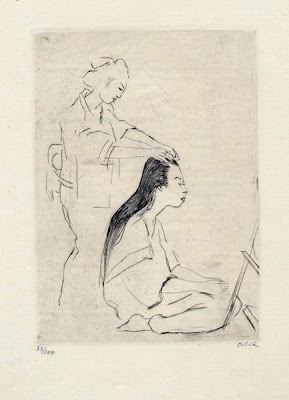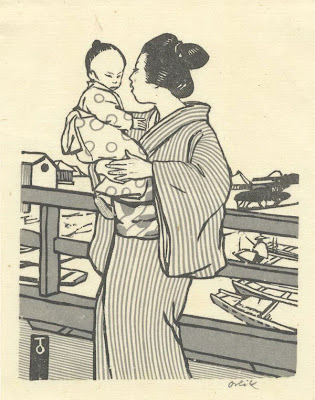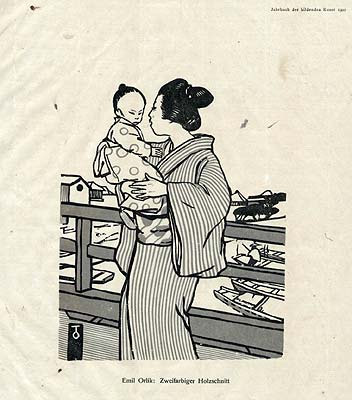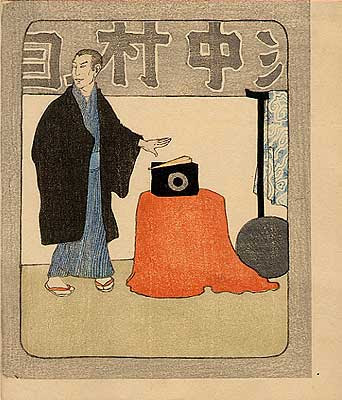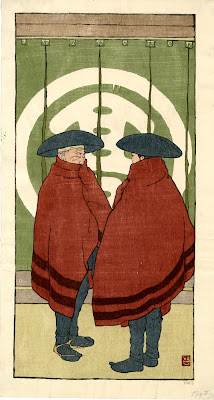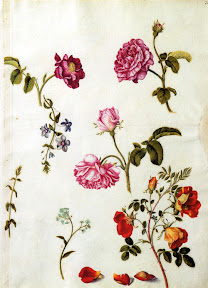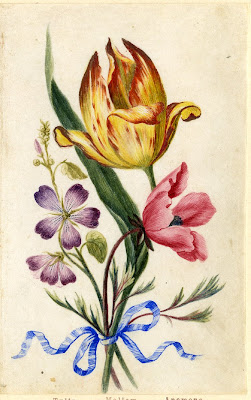source:
Bukowskis-StockholmAUTUMN CLASSIC SALE, STOCKHOLM 565
AUCTION: 6 – 9 DECEMBER 2011 | VIEWING: 30 NOVEMBER – 5 DECEMBER 2011
Ilya Repin-Portrait of Mrs. Beatrice Levy,1918
![]()
UPD:Пикаса глючит,дубль 2 из другого фотохостера
![Photobucket]()
ИЛЬЯ РЕПИН.
ПОРТРЕТ БЕАТРИС ФЕДОРОВНЫ ЛЕВИ
Подпись: Илья Репин и дата 1918. Линолеум, масло, 80 х 66 см.
"Не все ли равно, на чем писать! Все равно после второй-третьей переписки даже под первым сильным слоем красок холст исчезает и не играет никакой роли. Вот я пишу на линолеуме со времен войны. Чудесный материал, и прочный. Подумайте, годами на полу лежит, люди по нему ходят, а он выдерживает", - так объяснял сам художник выбор этого материала. А как считают специалисты, насыщенный красновато- коричневый цвет основы - оборотной стороны линолеума - стал одним из компонентов образного решения портрета.
***
"Именно в области портрета Репину удалось реализовать самые разнообразные качества своего художественного дарования. Этот жанр оставался близок ему до самых последних лет жизни, и именно в портретах позднего периода отразились как противоречия и потрясения эпохи, раскалывающейся на его глазах, так и собственные его внутренние переживания. "Портрет Беатрис Леви", написанный летом 1918 года, относится к тем великолепным проявлениям творческого духа и мастерства Ильи Репина, которые оставались неподвластны ни возрасту художника, ни трагическим переменам, которые он наблюдал в окружающей его реальности, - отмечает эксперт "Буковскис", российский искусствовед Елена Баснер. - Художнику удалось создать удивительно радостный, светлый образ, тем более, может быть впечатляющий, если помнить о дате его создания. Портрет звучит как символ утверждения красоты и женственности, торжествующих вопреки страшным потрясениям окружающего мира, охваченного войной".
"СТРОЙНАЯ МУЗА В БЕЛОМ" (подробно)
Василий Леви, Санкт-Петрбург (приобрел непосредственно у художника ок. 1919 г.).
Erik и Selma Minnberg, Berga Säteri, Унунге, Рослаген, Швеция (приобрели у Василия Леви в 1920-х гг.).
Унаследована Ingrid Sergenius в 1986 г. (урожд. Minnberg), Стокгольм, Швеция.
Унаследована Jan Sergenius в 2001 г., Стокгольм, Швеция.
Литература: Игорь Грабарь, Илья Зильберштейн. Илья Ефимович Репин. - М., Л.: Академия Наук СССР, 1948. - (Сер. "Художественное наследство"). См. иллюстр. на стр. 310.
"СТРОЙНАЯ МУЗА В БЕЛОМ"
"ПОРТРЕТ БЕАТРИС ФЕДОРОВНЫ ЛЕВИ" ИЛЬИ РЕПИНА
Картина Ильи Ефимовича Репина, "Портрет Беатрис Федоровны Леви", является уникальным произведением художника, которое ранее никогда не выставлялось или присутствовало на арт-рынке, репродукции портрета никогда не публиковались. Картина только однажды была показана в виде черно-белой фотографии в фундаментальных исследовательских монографиях, посвященных И. Е. Репину ("Репин. Художественное наследство". - М., Л., 1948).
Этот портрет - триумфальное романтическое празднование самой жизни, он может считаться одним из самых красивых портретов, созданных Репиным. В ходе подготовки этой публикации был обнаружен обширный материал: фотографии, письма, рукописи и др., принадлежащих Илье Репину и Василию Леви (мужу модели), ранее неизвестных музеям и искусствоведам.
Материал представляет собой историческое и искусствоведческое сокровище, отражающее как период жизни Ильи Репина, живущего в повседневных проблемах после русской революции, так и философию его искусства, описанные его собственными ясными словами.
Репин стал безоговорочно признанным мастером портрета с момента его дебюта в рамках этого жанра. Именно посредством портретной живописи он реализовал свои многочисленные художественные черты: прозорливость, и чувственность, наблюдательность и волнение, подлинный глубокий психологизм и вулканический, взрывчатый темперамент.
Репин любил портретный жанр на протяжении всей своей жизни. Его последние работы отражают как противоречия, так и его собственное неприятие эпохи, ведшей к развалу, совершающемуся у него на глазах, а также его собственную внутреннюю борьбу.
Портрет Беатрис Леви созданный летом 1918 года – великолепный образец художественного гения Репина и навыков, которые были неподвластны ни его старению, ни трагическим преобразованиям окружающего мира. Портрет является выдающимся примером художественных принципов и стилистики, выразительности и привлекательности, которые были открыты Репиным только в последние годы его жизни.
Особая атмосфера, которую Репин, несмотря на повседневные беды и потрясения, создал и сумел сохранить в кругу своих друзей и знакомых, также во многом способствовали возрождению его творчества, страсти и поистине юношеского энтузиазма. Все это воспринимается при знакомстве с портретом Беатрис Леви.
Атмосфера репинского жилища продолжала оставаться неизменной даже после исторических событий 1917 года (Октябрьской революции, начала Гражданской войны). Его дом в «Пенатах» оказался изолированным от крупного мирового центра, Санкт-Петербурга, и стал своего рода символом отступления от старой культуры.
Само существование такого "приюта" для писателей, художников, музыкантов символизировало постоянную устойчивость по отношению к окружающей действительности, где общая неурегулированность, разруха, безвозвратные утраты традиционных ценностей, отсутствие экономической безопасности с каждым днем становились все более отчетливыми и глубокими. С другой стороны, в те послереволюционные годы Репин должен был заботиться о своей семье – своих дочерях, сыне и внуках, которые все еще не могли жить самостоятельно, все еще экономически зависели от непререкаемой репутации своего отца и его великого имени.
Ни семейная жизнь Ильи Репина, ни повседневная рутина не были идиллическими, и многие близкие это понимали. Фактически семья часто была на грани голода и бедности.
Василий Филиппович Леви (1878-1954 гг.) был одним из тех, кто очень хорошо знал и понимал Репина. Он понимал значение Репина для национального искусства, а также был осведомлен о сложных жизненных обстоятельствах, при которых стареющий художник был связан ответственностью за своих близких.
Леви признался, что он был поклонником Репина с самой молодости, прежде, чем они познакомились. Он восхищался не только художественным гением Репина, что было бесспорно, но и политическими взглядами художника, который защищал справедливость, честь и человеческое достоинство.
Впервые они встретились весной 1918 года, когда семья Леви, наконец, поселилась в городе Терийоки (сегодняшний Зеленогорск) после того, как пережила драматические дни революции в их летнем доме в Финляндии. Это было недалеко от Куоккала, места, где жил Репин, поэтому Леви отправились к нему с визитом.
С первого момента Репин совершенно очаровал его новых знакомых, в особенности своим искренним интересом к художественным работам Леви. Вскоре Репин нанес ответный визит Василию и Беатрис Леви.
Репин был крайне рад пообщаться с необремененной и относительно богатой семьей (что было нечасто в те несчастные времена).
С другой стороны, Василий Леви испытал искренний восторг в первый вечер, проведенный в компании художника, бывшего его идеалом на протяжении очень многих лет.
Это было началом их близких отношений, которые длились в течение одиннадцати лет.
"Вскоре после встречи с Репиным в 1918 году я узнал, что он действительно нуждался", пишет Леви в своих мемуарах.
"Я чувствовал себя очень польщенным, когда он свободно и легко рассказал мне о своем положении и попросил одолжить небольшую сумму денег, около 200 марок, я думаю. С этого момента, я и моя жена предлагали ему кредиты сами .... Илья Ефимович предложил написать портрет моей жены, чтобы выплатить долг. "
Василий Филиппович, муж модели, а также страстный и преданный поклонник Репина, испытывал больше всего энтузиазма от идеи написать портрет Беатрис Леви. Репин был также явно вдохновлен как возможностью написать портрет молодой привлекательной дамы, так и дружбой с семьей Леви; другая возможная причина была экономической.
Кроме того, взаимодействие с начинающим художником, чье восхищение и даже обожание Репин должен был заметить, но чьи художественные предпочтения, несомненно, принадлежали к новой эпохе, должны были вызвать в нем своего рода конкурентный толчок, желание доказать, что он тоже мастер в стилистике модернизма с его понятиями цвета, линий и пространственных решений.
Это обстоятельство помогло представить новый стиль Репина и сделало этот портрет выдающимся в репинском творчестве.
Пространство портрета сразу же приобрело истинную монументальность и величие, подчеркивая утонченную красоту молодой и очаровательной женщины. Репин объединяет представленный в портрете антураж (здесь он воспроизведен лишь косвенно, как "цитата") с чрезвычайно жизненным, искусным образом модели.
Репин сумел создать удивительно веселый, радостный образ, который является еще более впечатляющим, если мы посмотрим на дату, записанную в левом нижнем углу: 1918.
Портрет звучит как символ торжества красоты и женственности во время страшного разрушения окружающего мира, принесенного братоубийственной войной!
”SLENDER MUSE IN WHITE”.
“PORTRAIT OF BEATRICE LEVI” BY ILYA REPIN -in English
***
This entry was originally posted at http://elle-belle.dreamwidth.org/1684817.html. Please comment there using OpenID.
![]()





















